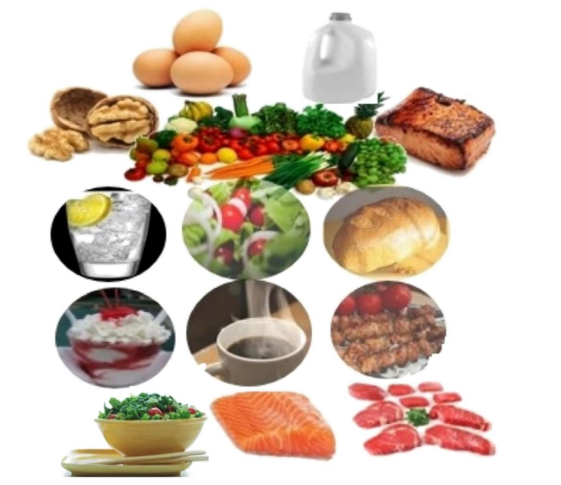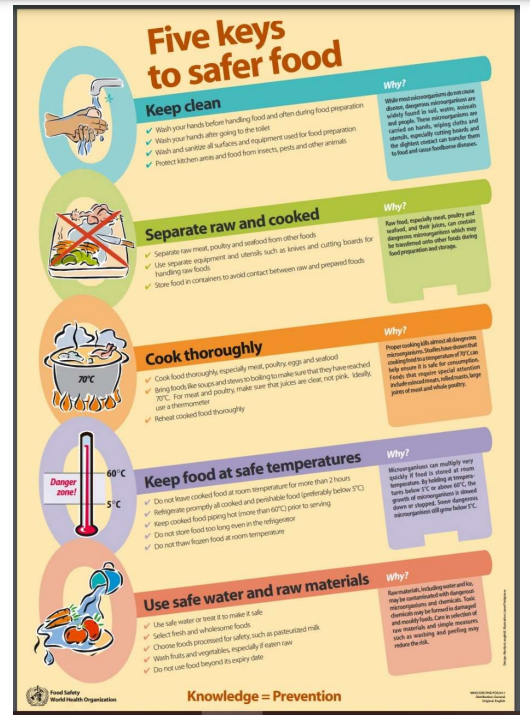FSQA in Different Food Sectors: Food Safety Assurance for Food Operations
Food Safety and Quality Assurance (FSQA) in Different Food Sectors
A Universal Food Safety Assurance Focus for Food Operations

Figure 1: Essential Food Safety Focus (FA)
Recognizing the ever-looming potential for chaotic formalities, this article highlights the universal focus that should govern food operators’ food safety assurance commitment from primary production to consumption. This universal focus blends the academic, enterprise, and public service considerations. This article inspires food operators to consistently maintain the right focus in ensuring the safety of food.
Understanding and maintaining the right focus in any endeavor ensures the right kind of success. Having the right food safety focus has the collateral benefits of ensuring the efficacy, effectiveness, and efficiency of actions within a food safety assurance system.
What is food safety, and what is its assurance system?
According to CODEX: Food safety is the assurance that food will not cause adverse health effects to the consumer when it is prepared and/or eaten according to its intended use (Codex Alimentarius, 2020).
The Safety, Security, and Quality Assurance (SSQA) concept expands this definition as follows: Food safety is a discipline comprising of the concepts, conditions, considerations, education, expertise, provisions, processes, measures, actions and practices relating to ensuring the state in which food does not cause harm to the consumer (Amiri, 2020).
These definitions present food safety as a multi-faceted system. This means that ensuring its effectiveness requires systems thinking, particularly with a food supply network that consists of collaborators from various sectors. Systems thinking involves the concurrent considerations of the micro-systems within a larger system. The micro-systems consist of the distinct factors, disciplines, collaborators, contributors, considerations, concepts, and tasks.

Figure 2: Some Common Foods and Agricultural Commodities (FA)
Farmers, harvesters, processors, manufacturers, distributors, retailers, and consumers must give attention to multiple things in ensuring the safety of food. Things that need attention include: The sources, the condition of the food, its acceptable attributes, processing steps, various food safety management strategies, health hazards due to handling, processing, packaging, storage, and safe preparation. Without a clear focus, food safety assurance activities could easily turn into a very disorganized affair. Food operations could easily maintain a confusing array of food safety management activities, even where they follow certain industry standards. The chaos often extends to how managers address encountered situations, sometimes with internal jostling for power among the personnel and departments. Having a clear and consistent focus prevents a confusing adoption of otherwise good concepts like Hazard Analysis and Critical Control Point (HACCP), and Safety, Security, and Quality Assurance (SSQA).
HACCP, SSQA and other management concepts play a significant role in maintaining the universal food safety assurance focus. The situations listed in the following table should be helpful in identifying this universal focus. These examples point to the common food safety control that failed.
Examples of situations experienced by consumers:
- A consumer suffering the pain of a broken tooth from biting a metal piece while eating meat pie.
- A person rushed to the hospital due to E. coli poisoning within a few hours of consuming a bowl of garden salad.
- A restaurant customer suffering a serious seafood allergy reaction after eating a curried chicken meal.
- Multistate outbreak of hepatitis A virus infections linked to fresh organic strawberries: (Division of Viral Hepatitis, National Center for HIV, Viral Hepatitis, STD, and TB Prevention, 2022).
- Schoolchildren with severe burning of the mouth and throat, as well as nausea within 1 hour of drinking milk: (U.S Centers for Disease Control and Prevention, 2001).
- Batch of frozen fish recalled due to high mercury levels (Cyprus Inform, 2017). It is known that the type of fish and the harvesting locations contribute to elevated levels of mercury. (U.S. National Centers for Coastal Ocean Science, 2016).
The listed issues cut across the agricultural production, harvesting, processing, manufacturing, and food service sectors. The products came from different operations and different sectors. As such, the suggestion of a common food safety control failure may appear to be incorrect. However, the connection is easy to see. Irrespective of the sector, the listed situations involved food that was unsafe due to cross contamination – the presence of hazards which should not have been in the food in the first place.
Any instance of unsafe food can be linked to a cross contamination control that failed. This makes it necessary for food operators in all sectors to treat cross contamination control as the universal food safety assurance focus. The good hygiene practices (GHPs) that all food operators must maintain are cross contamination control measures. The five keys to safer food, as suggested by the World Health Organization, outline cross contamination control measures. (World Health Organization, 2006).

food safety assurance
Figure 3: Five Keys to Safer Food Source: World Health Organization, 2006
Advanced cross contamination control programs cover the entire scope from growers to consumers. Good operation practices (GHPs HACCP, SSQA) and other strategies adopted by operators ensure their commitment to preventing, eliminating, or reducing food hazards to safe levels.
- Preventing – Deploying mechanisms of separation, segregation, shielding, and packaging to stop food from coming in contact with incompatible food, materials, water, chemicals, equipment, surfaces, and environmental agents, where such contact leads to the presence of hazards. ü
- Eliminating – Applying sanitation practices and kill-step treatments (e.g., disinfecting, heating, pasteurizing, hyperbaric process, irradiation, gas treatment, etc.) to completely remove contaminants that may already be present in the food (e.g., pathogens, chemicals, physical hazards, allergens, etc.). The elimination treatments require validation tests to confirm their effectiveness. ü
- Reducing to safe levels –Modifying the control treatments with verification and validation of the safe levels achieved (where it is impossible to eliminate the contaminants).
Managers of food safety programs should be knowledgeable about preventing, eliminating, and reducing cross contamination to safe levels. Managers must be skillful in the effective implementation of GHPs, HACCP, SSQA and other concepts. Where operators do not have qualified in-house personnel to effectively lead their cross contamination control commitment, they may seek external expertise to provide required assistance.
References
Amiri, F. (2020, December). Global Consumer Protection SSQA Development and Implementation: A Manual for the Food Industry. Retrieved June 16, 2023, from Afisservices.com: http://www.afisservices.com/gcse-Ĭp/SSQAFullManual.html
Codex Alimentarius. (2020). General Principles of Food Hygiene CXC 1-1969. Retrieved June 9, 2023, from https://www.fao.org/fao-who- codexalimentarius/shproxy/en/?lnk=1&url=https%253A%252F%252Fworkspace.fao.org%252Fsites%252Fcodex%252F Standards%252FCXC%2B1-1969%252FCXC_001e.pdf
Cyprus Inform. (2017, June 29). News. Retrieved June 13, 2023, from Cyprus Inform: https://www.kiprinform.com/en/cyprus_news/batch-of-frozen-fish-recalled-due-to-highmercury-levels/
Division of Viral Hepatitis, National Center for HIV, Viral Hepatitis, STD, and TB Prevention. (2022, June 29). Multistate Outbreak of Hepatitis A Virus Infections Linked to Fresh Organic Strawberries. Retrieved June 7, 2023, from U.S Centers for Disease Control and Prevention: https://www.cdc.gov/hepaƟƟs/outbreaks/2022/hav-contaminated-food/index.htm
U.S Centers for Disease Control and Prevention. (2001, May 2). Epidemiologic Notes and Reports Ammonia Contamination in a Milk Processing Plant — Wisconsin. Retrieved June 7, 2023, from Morbidity and Mortality Weekly Report (MMWR): https://www.cdc.gov/mmwr/preview/mmwrhtml/00000726.htm U.S. National Centers for Coastal Ocean Science. (2016, March). Mercury Hot Spots and Bioaccumulation in Fish. Retrieved June 13, 2023, from U.S. National Oceanic and Atmospheric Administration,
National Centers for Coastal Ocean Science: https://coastalscience.noaa.gov/project/mercuryhot-spots-bioaccumulaƟon-fish/ World Health Organization. (2006, May 15). Five keys to safer food manual. Retrieved June 17, 2023, from World Health Organization: https://www.who.int/publicaƟons/i/item/9789241594639










































































